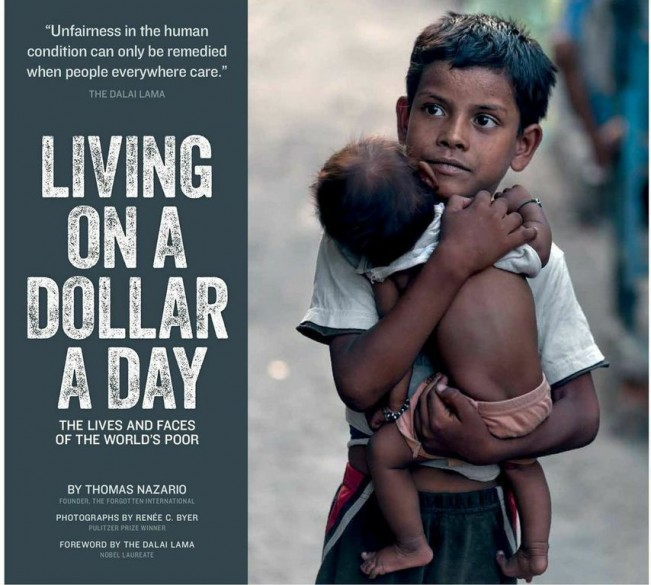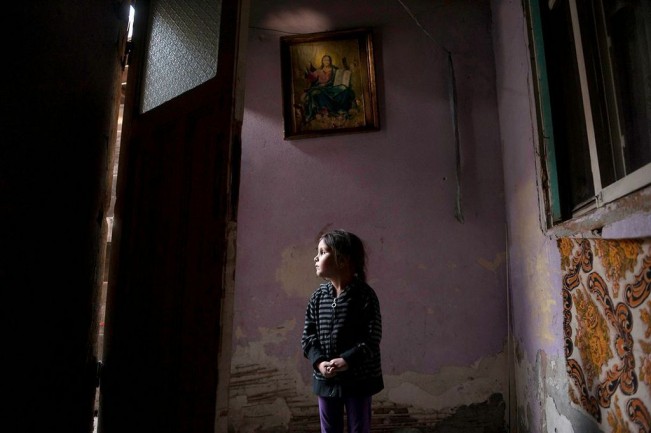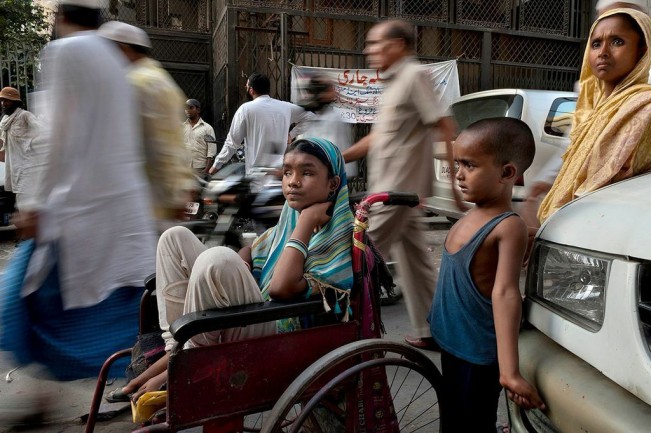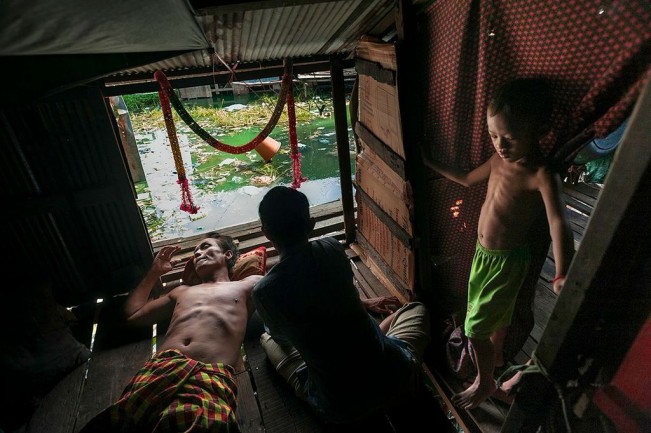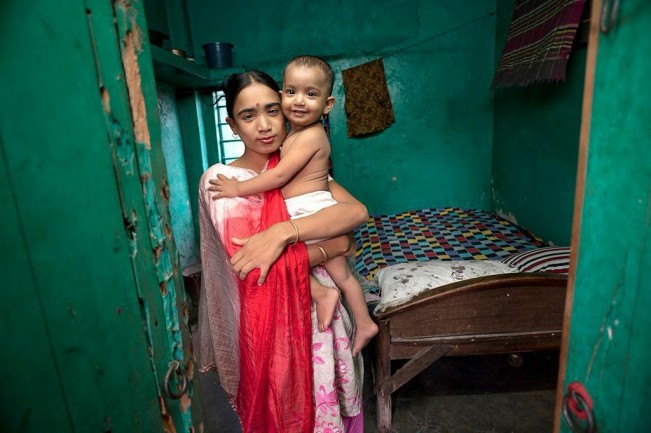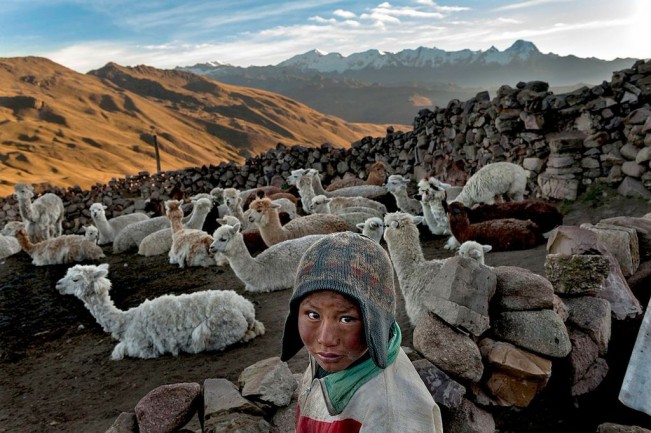Living on a Dollar a Day: The Lives and Faces of the World’s Poor
The following images/text are excerpted from Living On A Dollar A Day (The Quantuck Lane Press, 2014) by Thomas A. Nazario, with Photographs by Renée C. Byer, Foreword by the 14th Dalai Lama.
“I think of myself as a journalist who chooses the art of photography to bring awareness to the world. Art is a powerful means of expression, but combined with journalism it has the ability to bring awareness to issues that can elevate understanding and compassion. It’s the basic reality of why I do what I do.”
—Renée C. Byer
To create her work for Living On A Dollar A Day (The Quantuck Lane Press), a ground-breaking book that is a call to action to eradicate extreme poverty, Pulitzer Prize-winning photojournalist Renée C. Byer traveled to ten countries on four continents to illuminate the human faces of poverty. With support from The Forgotten International (The Forgotten International), a nonprofit organization based in San Francisco that works to alleviate poverty in the U.S. and worldwide, Byer sought out people who live on the brink of survival – on a dollar a day. Her beautiful and searing photographs along with the personal stories Byer gathered, give a voice to those who would not otherwise be heard.
While working on this project, Byer gained exceptional access to photograph, interview and follow her subjects, establishing trust so they would open up their lives to her. In the ten countries she traveled to – Bangladesh, Bolivia, Cambodia, Ghana, India, Liberia, Moldova, Peru, Romania and Thailand – Byer witnessed people suffering from the ravages of war, disease, child labor, forced prostitution, starvation, homelessness, and environmental toxins with little or no hope of help. The stories presented here are heartbreaking, but also reflect the extraordinary resilience of the participants. Balancing emotion and action, her pictures draw us toward the faces of these people, connecting us on a human level.
Among the poor, children everywhere take care of other children. Pictured on the book cover above, Vishal Singh, 6, cares for a baby girl while her mother is away in the Kusum Pahari slum in New Delhi, India. When Vishal is not working or attending to his chores, he attends a school for the children of the Kusum Pahari slum. It is located on the slum grounds. The school is an open-air facility. It has no power, no toilets, and no books. To learn their lessons the children and teachers here work off chalkboards. Tuition is 2 rupees a week but no child is turned away for lack of funds. When Vishal is not working gathering rags in a garbage dump for recycling, he goes off to school with nearly six hundred other children of this slum community.
Jestina Koko, 25, with her daughter Satta Quaye, 5, has been crippled since the age of three. She depends on her arms to lift and drag herself. She survives by doing laundry for others, selling cookies on the street, and begging in Monrovia, Liberia. Both of them suffer from malaria. She wishes for a wheel chair, a private room to live in and for her daughter to go to school. They sleep in the hallway of a home that has no electric, toilet or running water and own nothing.
In an e-waste dump that kills nearly everything that it touches, Fati, 8, works with other children searching through hazardous waste in hopes of finding whatever she can to exchange for pennies in order to survive. While balancing a bucket on her head with the little metal she has found, tears stream down her face as the result of the pain that comes with the malaria she contracted some years ago. This is work she must do to survive.
Four-year-old Ana-Maria Tudor, above, stands in the light of her doorway in Bucharest, Romania, hoping for a miracle as her family faces eviction from the only home they have ever had. Her father recently had a gall bladder surgery that resulted in an infection and left him unable to work. The one room they live in has no bathroom or running water.
A sea of people passes by Hunupa Begum, 13, who has been blind for the past 10 years and lives close to the Nizamudin Bangala Masjid (Mosque) in New Delhi, India. She begs as the only source of income for her family that consist of a brother Hajimudin Sheikh, 6, center, who suffers from fluids that accumulate in his head and her mother Manora Begum, 35, right, who suffers from asthma, and she has a womb ailment and can’t do manual labor. Their father Nizam Ali Sheikh died ten years ago of tuberculosis. Her wheelchair was donated by a passerby.
Phay Phanna, 60, lost his leg when he stepped on a land mine in 1988 near the Cambodian-Thai border. He is a widower and is the sole head of his family, caring for 11 children in a home he does not own. It has been scheduled for demolition since being purchased by a private developer in 2008 in Phnom Penh, Cambodia.
Labone, 27, takes a moment to hold her young daughter Nupur, 1, who was fathered by a client, before she has to return to her evening’s work in a brothel in Jessore, Bangladesh.
Following the death of his father, Alvaro Kalancha Quispe, 9, helps his family survive by herding. He opens the gate to the stone pen that holds the family’s alpacas and llamas each morning so they can graze throughout the hillsides during the day. He then heads off to school, but must round them up again in the evening in the Akamani mountain range of Bolivia in an area called Caluyo, about an hour from the city of Qutapampa.
In this part of the world, the highlands of Bolivia, approximately 13,000 feet above sea level, residents live in homes with no insulation, no electricity, and no beds. Their water comes from streams that run off the snow-covered mountains. Their livelihood lies with their animals, for each animal produces about three pounds of fur each year, and each pound of fur is sold for 18 bolivianos, which amounts to about $2.50 U.S. All in all, this family may earn about $200 of income each year from the herd they watch over.
ALL PHOTOS COPYRIGHT ©RENÉE C. BYER
Posts on Lenscratch may not be reproduced without the permission of the Lenscratch staff and the photographer.
Recommended
-
Shinichiro Nagasawa: The Bonin IslandersApril 2nd, 2024
-
The International Women in Photo Association Awards: Lorraine Turci: The Resilience of the CrowMarch 16th, 2024
-
The International Women in Photo Association Awards: Rayito Flores Pelcastre: Chirping of CricketsMarch 14th, 2024
-
The International Women in Photo Association Awards: Louise Amelie: What Does Migration Mean for those who Stay BehindMarch 12th, 2024
-
Brandon Tauszik: Fifteen VaultsMarch 3rd, 2024

